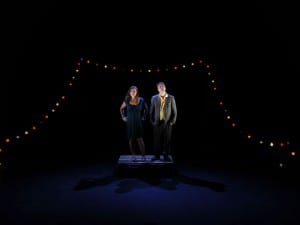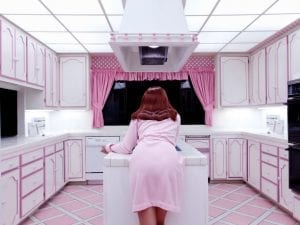The multifaceted histories of photography, art and politics are juxtaposed in an exhibition of the sprawling city and the shrinking rainforest.
Between March 1964 and March 1985, Brazil lived under military dictatorship. The regime advocated nationalism, vehemently opposed Communism, and prioritised economic development – with the heavily propagated “Brazilian Miracle” providing dramatic economic and structural development. Meanwhile, political or ideological resistance on any level was repressed and eliminated, a process confirmed by Institutional Act number five (IA-5), which was passed in 1968. One of 17 Institutional Acts that President Artur da Costa e Silva and subsequent leaders were to rule by, the act granted the President the right to intervene in law without consulting the Constitution, to suspend any individual’s right to habeas corpus and to civil rights for up to 10 years, and – most significantly for the arts – it banned any type of political manifestation against the government.
What followed was heavy censorship across the media, including magazines, newspapers, music, film, television and theatre; therefore to continue working, Brazilian artists of the late 20th century looked to new methods of communication. To escape censorship – or, indeed, deportation, as experienced by several of Brazil’s leading Modernist architects of the 1960s – artists began to innovate, using new and often ephemeral or untraceable mediums such as land art, performance and conceptualism to express their ideas.
One such Brazilian conceptual artist was Cildo Meireles, who began stamping symbols of capitalist consumerism such as banknotes with political slogans such as “Who killed Herzog?” (a journalist tortured to death in prison by the Brazilian police), or Coca-Cola bottles with the statement “Yankees Go home” in the 1970s – even progressing to print these bottles with instructions as to how to turn them into Molotov cocktails. The objects were returned to the market as part of the Insertions into Ideological Circuits series, a project that Meireles described as “Registering information and critical opinions on bottles and returning them into circulation,” using guerrilla tactics to avoid state censorship and incorporate the consumer as part of the artwork. With his insistence on making the viewer an active participant, even inviting people to mark consumer goods themselves, Meireles was very much a part of Brazil’s Neo-Concretism movement. This movement, founded in the late 1950s by Lygia Clark and Lygia Pape, and including Hélio Oiticica by the 1960s, has invited a contemporary following, including photographer and multi-media artist Caio Reisewitz, whose Netherlands premiere opens at the Huis Marseille in July.
While Meireles’s work criticised the military regime – particularly its fast economic growth at the expense of its people – through covert means and therefore invited viewers to investigate, contemporary Brazilian artists make political comments through far more transparent means. Artists whose practice has developed in the years since liberation, such as Reisewitz (b. 1967) continue to reflect the Brazilian art tradition of subversion and visual trickery, making visible close links to those working through the years of suppression.
Reisewitz’s collages combine Brazilian Modernist constructions and the endless flora of the Amazon, and reflect an encounter mentioned by Juan Carlos Bendana-Pinel of Bendana | Pinel Gallery, Paris, who has curated Reisewitz’s latest exhibition: “One day Cildo (Meireles) told Caio (Reisewitz) that during the demonstrations that took place in Brasilia during the dictatorship, it was very difficult to escape the police and run due to the city’s urban planning. There are no corners to hide.” Reisewitz throw these urban buildings into the deep green of the Brazilian forest, confronting the viewer with surprising and bewildering scenes.
The Amsterdam debut explicates the legacy of modern art and Brazil’s dictatorial era, and its effect upon Brazilian artists of today; this is alluded to in the first instance by the exhibition title: Florestas, favelas & falcatruas. Translating from Portuguese as “Forests, favelas and deceit,” the title becomes clear in relation to Reisewitz’s work when we consider that during the military regime, the Trans- Amazonian highway was built to allow greater control of the Amazon and the deforestation of previously uninhabited areas, and that economic growth led to an influx into cities, whose new citizens dramatically extended existing favelas.
Furthermore, as Bendana-Pinel notes: “Falcatruas refers to the ‘trickery’ of an image” in terms of the Brazilian art tradition of multiple meanings, and “at the same time, to the political scandals and unrests in Brazil. While Reisewitz’s images are initially large-format photographs of various urban and natural sites, captured in the Düsseldorf School style through their documentary, topographic viewpoint which minimises the human figure, this “mixing of economic- interest aspects” such as mining sites, factories and shack-like or luxury homes, alters the way in which these landscapes are read, leading them to critique the politics of Brazil.
Before this secondary understanding of Reisewitz’s work is found, great similarity can be seen between his and the work of German photographer and Düsseldorf School graduate Thomas Struth, particularly the Paradise pictures whose 36 images were taken across the tropical rainforests of Australia, China and Japan, in the forests of Bavaria, Germany, and later in Brazil, Peru, Hawaii and Florida. Of post-conflict stance (thereby relating to that of Reisewitz) this series was concerned with reflecting what kind of progressive or utopian thinking might have been possible at the end of the Cold War. As with much of Reisewitz’s work, Struth’s series is intuitive and positions the viewer as if they are immersed within a forest or jungle: a plenitude of detail is on view, with no visual hierarchy. Instead the viewer deconstructs the image into various parts and – perhaps harking back to the Brazilian art tradition – becomes aware of the way in which they are processing the visual information.
Both Struth and Reisewitz’s images are timeless, with the latter digitally splicing images to present ancient forests, newly and haphazardly built favelas, 1960s concrete modernism and the decaying constructions of dictatorship- era Brazil in a single work. As Bendana-Pinel confirms, Reisewitz’s unusual medium is the result of the artist working “with the means and technology of his time. It is the time of constructed images. It is partly an answer or reaction to Photoshop; it also comes as a reaction to the Dada period, which began in the last century and Antropofagia (cultural cannibalism), a Brazilian movement of the late 1920s.” This movement supported the devouring and fusing of disparate and foreign influences to create Brazilian artwork, rather than the imitation of movements abroad; Reisewitz’s inclusion of the Düsseldorf School and Modernist aesthetics within his ‘cultural cannibalism’ is evident; however, the work also brings together the visuals of the less aesthetically considered constructions of factory machinery and slum housing with the stunning beauty of the Amazon rainforest.
The favela is such a common motif in Reisewitz’s work due to its unique nature. According to Bendana-Pinel, the term favela derives from a Portuguese word referencing “a plant that grows freely on the branches of wild trees.” Indeed, these settlements sprawl out of the city centre and into the forest like veins. The corrugated-iron suburbs threaten the rainforest ecosystem but cannot be torn down as, according to Brazilian law a roofed house is not to be demolished by the authorities. Slums such as São Paulo’s million square metre Heliópolis, therefore, have now been industrialised and taken on neighbourhood status in their own right.
Reisewitz incorporates the favela into his dense forest imagery often as miniature villages, with homes the size of blossoms, washing lines the size of fern leaves and family scenes fading into endless woodland; whether this is a rumination upon the authorities’ consideration of the favela – with many lacking in basic hygiene and infrastructure requirements – or the artist’s projection of his own values, in terms of metropolis versus nature, is unclear.
This visual debate concerning the importance of the natural world in comparison to our man-made human worlds leads to Bendana-Pinel’s comment that “Caio considers that photography has always encompassed the dichotomy between a certain truth and a perceived reality.” Meanwhile, further works which provide locations with new functions – a Brasilia golf course becoming an interior décor for example, or a 200 year old botanical garden presented as a virgin wilderness – confirm this statement. These images which combine the forests around São Paulo, the oil platforms of the Amazon, empty swimming pools in Modernist architectures and attempts at Brazilian architectural utopias, provide a complex visual and reveal various realities.
Alongside this anti-urbanist and political message, the work simultaneously celebrates the opposing beauties of the Modernist, handmade and urban architecture alongside the forests of Brazil. As Bendana-Pinel confirms, “Both are a part of [the work]. It is a reflection upon the [Brazilian political] system and [Brazil’s] ever-changing nature. One has to remember that the dictatorship existed not too long ago. Democracy is only beginning.” For Reisewitz, the threat of human intervention within the landscape not only appears in collages whereby industrial buildings appear as foreign beings, having just landed in the rainforest, but also in straight large-format photographs. Thick smoke rises from just-cleared ground, or even blood runs across the grounds of a farming region: these stark works move the message away from Reisewitz’s Brazilian roots and speak about the broader issues surrounding our use of our planet.
Having come from German and Tanzanian descent, Reisewitz studied in São Paulo before returning to his German roots at the age of 20, therefore he admits “I feel like someone who’s not from around here, but I do come from here, and that fact affects the way I look at the country.” This distanced outlook provides a panoptic view of his nationality, and Brazil in terms of its politics, history and natural resources. The presence of the great Amazon is consistent throughout Reisewitz’s work, as is the continuous socio-economic and ecological dilemmas and responsibilities caused by this enormous being, known also as “the lungs of the world.”
Chloe Hodge
Caio Reisewitz: Florestas, favelas & falcatruas
3 July – 6 September. Huis Marseille, Amsterdam.





